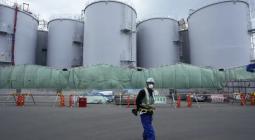'Clean hydrogen is the most economic decarbonisation option for Japan — but how can we import it?'

Despite government-backed pilots exploring liquid hydrogen, ammonia and methylcyclohexane as H2 carriers, industry remains split on which will be most cost-effective option
Japan is often touted as one of the key markets for hydrogen demand, with the government targeting a ten-fold increase in H2 supply from two million tonnes today to 20 million tonnes by 2050.
And the country’s focus to-date on carbon intensity rather than source of hydrogen, in contrast to the EU’s strict requirements for renewable H2, have led many developers to eye Japanese import as an easier route for offtake.
But why this push for hydrogen?
“Decarbonisation of Japan is accepted, but ‘how’ is the problem,” Ko Sakata, senior research fellow at Japan’s Institute of Applied Energy, told the Connecting Green Hydrogen Japan conference last week in Tokyo. “The ultimate energy system of a low-carbon society should be, for primary energy, renewables, fossil fuels plus CCS, and nuclear,”
However, “good sites or economical sites for renewable energy and for CCS are not in Japan”, he said, adding that better sites in terms of both resource and cost can be found outside the country.
“Nuclear power generation is the problem in Japan,” Sakata said, noting that the Institute of Applied Energy’s modelled energy system for the country to reach carbon neutrality by 2050 assumes no new construction of new nuclear power stations.
Japan has begun to restart nuclear power stations shuttered in response to the Fukushima Daiichi disaster in 2011 but only 12 of 54 reactors have come back on line, with more than half decommissioned.
And although the government has passed a bill extending nuclear power plant operational life beyond 60 years, and also set a target for 20-22% of Japan’s energy mix to be from nuclear by 2030, new reactors are expected to be more difficult to install due to high capex, stricter safety standards, and some continued public opposition.
Meanwhile, the model’s estimate for Japan to capture and store 200 million tonnes of CO2 per year by mid-century was highlighted by Sakata as potentially “a little optimistic”, given a lack of clear sites within the country or its neighbours for sequestration on this scale.
The Institute of Applied Energy therefore puts the share of clean hydrogen in the primary energy supply at 13% by 2050. The model also predicts natural gas to be the largest primary source of energy, albeit with rising wind, solar and biomass in the mix.
However, earlier this year, research firm BloombergNEF (BNEF) released an analysis arguing that based on least-cost energy system modelling, domestic wind and solar could still make up 62% of power generation by 2050, with only seven million tonnes of H2 needed for the country to meet net zero by 2050.
Import nation
A big reason for this push for hydrogen are the economics of transporting clean energy from overseas — where it can be more cheaply produced — into Japan, according to Sakata.
At distances of 4,000km or less, such as between Shanghai and Japan, Sakata anticipated that undersea high-voltage direct current cables would be a “more economical” way to transmit renewable energy than hydrogen imports shipped as either a liquid or via carriers such as toluene.
But at more than 4,000km distance from Japan, including potential supply centres in Chile or the Arabian Gulf, shipping in renewable electricity as green H2 costs less than a direct cable running a similar distance, such as from California, according to Sakata’s figures, although he did not give further detail on how these were calculated.
Analyst and investor Michael Liebreich, in an update to his Hydrogen Ladder this week, made a similar suggestion. “As long as the source country is within cable and pipeline range” of around 5,000km, then transmitting renewable electricity via HVDC [high voltage direct current] “easily beats the full-system economics of importing power by turning it into hydrogen, putting it in a hydrogen pipeline and then regenerating power”, he said.
Even at distances beyond 5,000km, “the economics of making [hydrogen] and then turning it back into electricity at the destination are worse than practically any form of local clean electricity generation, even if it creates a requirement for some long-duration storage”, Liebreich argued, although he anticipates that hydrogen could end up imported for purposes other than power generation, such as refining or as a feedstock for chemicals, rather than domestically produced.
Sakata also noted that the exact proportion of hydrogen imports versus domestic production “at the moment… is not clear”.
“Even now, we have the discussion of how much of hydrogen should be transported from abroad… by the year of 2050. It depends on the domestic capacity, and the international transport capacity. So at the moment, we have no clear idea.”
Analysis by price reporting agency S&P Global Commodity Insights indicates “the upper limit for Japan’s ability to produce hydrogen given its limited power resources will be maybe 20-30%”, according to Mendo Kundevski, an energy transition director at the firm.
However, Sakata admitted that most technology for transporting, storing and using hydrogen, such as for green steelmaking or as a fuel for ships and locomotives, was still not yet mature enough for commercial scale.
“While most of the CO2 emissions reduction needed by 2030 can be achieved with… the present technologies, the path to 2050 relies on technologies that are not yet ready for widespread uptake. And they must become available this decade, particularly in the sectors that are hard to decarbonise, [such as] heavy industry and long-distance transport.”
The Japanese government has backed projects in an effort to determine the best route to import H2, however the industry is no closer to reaching a consensus on which carrier makes the most sense.
“As of today, there are three ways of transportation, and that is liquid hydrogen, ammonia and [methylcyclohexane (MCH)]," said Yoshiaki Yokota, CEO of conglomerate Marubeni’s energy and infrastructure group on a separate panel. “But these three ways of transportation, each way still has issues, technical and economical.”
Marubeni is a partner on the CQ-H2 project in Australia, originally launched with the intent of exporting renewable hydrogen as a liquid to Japan. However a final decision on whether the consortium will go down this route “depends on liquid hydrogen ship development… by Kawasaki Heavy Industries”, as well as “the availability [of vessels] and the cost-balance”, Yokota said.
Meanwhile, Samir Serhan, chief operating officer for Air Products argued that the economics currently support ammonia, even with the extra cost of converting it back to H2.
“We are the world leader in transporting liquid hydrogen and liquid helium, so we really know that business. But when we decided to do Neom, [based on] the economics, we decided to convert the hydrogen to ammonia then crack it back to hydrogen when necessary,” he said, adding that if it were possible to “get to a point where you can transport liquid hydrogen at high volume, economically, that would be, from our perspective, the way to go”.
“If we try to transport in the form of hydrogen, of course [there are] safety problems and also the technological problems, it’s there,” said Toshiyuki Tanigaki, CEO Japan at French energy company EDF, adding that the company “would prefer the transportation to be in the form of ammonia”.
“As an oil refiner, we are looking at MCH. This is especially because we can utilise existing facilities including tanks and vessels to transport and store MCH,” said Hideaki Tanaka, general manager for hydrogen at Japanese oil and gas firm ENEOS.
He added that the carrier can be stored at ambient temperature and atmospheric pressure.
However, Tanaka also cautioned that current Japanese guidelines for clean hydrogen — requiring a carbon intensity of 3.4kg CO2 per kilo of H2 — only cover well-to-gate, with uncertainty around how “beyond the gate” emissions will be counted.
Since MCH needs to be dehydrogenated once it arrives in Japan, which will increase the carbon intensity, “if the guideline is very strict, we need to consider something like using green hydrogen for an energy source”, he noted.
However, it is unclear if he meant using some volumes of H2 to power the dehydrogenation process or a preference towards importing renewable hydrogen — which theoretically has a carbon intensity of zero.(Copyright)





